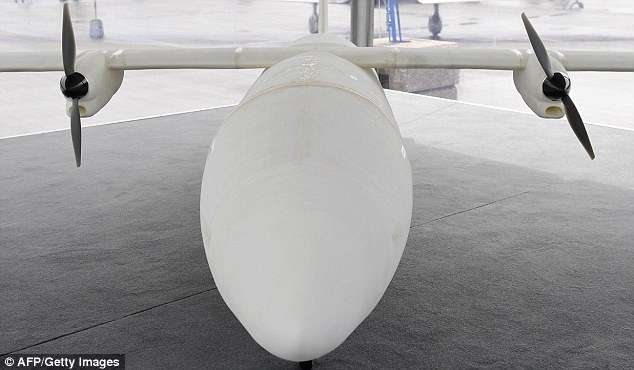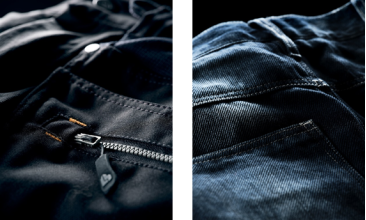Airbus builds 3-D printed airplane out of nylon

The first 3D printed plane is making its debut, and nope, it’s not another one that’s been made in miniature by a hobbyist. And while it’s not full-scale, it’s certainly presenting a huge milestone to the world as a 13-foot flying drone. It’s also the perfect example of how a company like Airbus is able to use every benefit of 3D printing in creating what is obviously just a stepping stone to their eventual fleet of futuristic 3D printed jets.
The company, headquartered in France, has been an enthusiast proponent of well publicized 3D printed components in aircraft such as their A350 XWB (boasting over 1,000 3D printed parts) up until now. We’ve been following their plans to release an advanced UAV named Thor since they filed for the patent and began making it clear that they see a future for planes emerging from 3D printers, as well as announcing that indeed they had fabricated an unmanned aircraft vehicle at their plant in Hamburg.
[EasyDNNGallery|2446|Width|400|Height|400|position||resizecrop|False|lightbox|False|title|False|description|False|redirection|False|LinkText||]
Thor, which stands for Test of High-tech Objectives in Reality (THOR), will most likely be employed for riskier endeavors and aerodynamic investigations, all meant to impress upon the world how viable a fully 3D printed aircraft truly is, boasting:
- 50 3D printed parts
- Two electric motors
- Remote control
The UAV can be printed in less than a month’s time. Presented at a recent Berlin air show, the windowless drone weighing 46 pounds was shown off as a display of exactly what 3D printing can offer to the aerospace industry—and just a beginning at that.
“This is a test of what’s possible with 3D printing technology,” said Detlev Konigorski, who was in charge of developing Thor, and in attendance at the International Aerospace Exhibition and Air Show.
‘We want to see if we can speed up the development process by using 3D printing not just for individual parts but for an entire system.”
Every part of the propeller aircraft is 3D printed except for the obvious electrical system, which has been constructed out of polyamide.
Gunnar Haase, chief engineer of Thor, says that the plane flies beautifully and is very stable.
Certainly it’s no surprise that we’re at this point, as the relationship between 3D printing technology and both the aeronautics and aerospace industries has been just as tight as that of automotive or medical. These are all very serious applications as they require the utmost in quality and safety for those who will be benefiting from the construction.
We’ve been following Airbus continually, as they’ve certainly not been quiet about these advancements, from partnerships with companies like Alcoa to start producing 3D printed components to design challenges for drones. Airbus is certainly not alone in their vision either, as other companies such as Boeing have been quite active also, with thousands of 3D printed components already in use in their aircraft and even such innovations as 3D printed ice for use in easing certification practices.
While some may question whether a true revolution is indeed happening, or may not see 3D printing changing the world quite fast enough, these massive innovations, which show off the self-sustainability a company can suddenly possess in design along with speed, quality, and affordability, are not just impressive but unprecedented. Discuss this latest ‘unveiling’ in the 3D Printed Airbus Plane forum over at 3DPB.com.
source: www.3dprint.com , ww.plasticsnews.com






